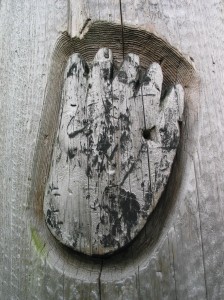At the time of the great California gold strike in 1849, there was an expression in common use, meaning the ultimate thrill, the symbol of exotic achievement. And it all came from travelling circuses, which had begun to display the very rare elephant. As the tale goes, a farmer heard that a circus had come to town, and it had one of the beasts. He set off with a cartload of vegetables for the market, and encountered the circus en route. He was thrilled, but his horses less so. The cart was overturned, the vegetables destroyed. The farmer declared he didn’t care, because “he had seen the elephant.”
 The man who would indirectly be responsible for bringing the “elephant” to California in 1849, was a Swiss immigrant, John Sutter. Not far from the small port of San Francisco, he built his own fort, bought livestock by the thousands, and hired immigrants to work his ever-expanding enterprises. In January of 1848, this included a sawmill, located on the American River. The mill architect, James Marshall scuffed up some yellow rocks with his boot. Then some more. And more. Worried that they were what he suspected, Marshall hot-footed it for Sutter’s Fort, where he and Sutter tested the ore by the crudest of methods, and found it to be gold. Neither one of them was happy.
The man who would indirectly be responsible for bringing the “elephant” to California in 1849, was a Swiss immigrant, John Sutter. Not far from the small port of San Francisco, he built his own fort, bought livestock by the thousands, and hired immigrants to work his ever-expanding enterprises. In January of 1848, this included a sawmill, located on the American River. The mill architect, James Marshall scuffed up some yellow rocks with his boot. Then some more. And more. Worried that they were what he suspected, Marshall hot-footed it for Sutter’s Fort, where he and Sutter tested the ore by the crudest of methods, and found it to be gold. Neither one of them was happy.
With completion of the mill in peril, not to mention the rest of Sutter’s fiefdom, they agreed to keep the find quiet. The veil of silence lasted for two weeks until the overseer of some workers sent to the location of the find, returned to the fort with nuggets given to him by the camp cook’s children. The secret was out. But strangely enough, no great influx of fortune hunters occurred.
It would take an enterprising San Francisco merchant, Sam Brannan to set off the flood. He ran through the streets of San Francisco, waving a bottle of gold dust and shouting the news of Marshall’s find. But not until after he had bought up every mining tool he could lay hands on. A metal pan that sold the week before at twenty cents, now cost fifteen dollars. In one week, Brannan netted $36,000 and would soon become the richest man in California. Alas, poor John Sutter. His mill would never be completed. Parts of it were even stolen. His large tanning factory lay silent, skins rotting in piles, half cured ones left in their tanks by workers who fled in search of the promised fortune that lay waiting.
People began to trickle, then flood in from all over America. Some would walk or travel by horse, four months across the country, while others endured the horrors of a six month ride by boat around the tip of South America, often paying up to $500 for the last leg of the journey to San Francisco. Those who crossed America also paid the price, in more ways than one. The last few hundred miles was dry, arid territory, with a lack of water, the worst problem. Enterprising residents trotted out with barrels and pails, selling a glass for a $1, and at times as much as $100. Those without the money, were left to die of thirst.
When they finally got to mining in California, men who made $1 at home, were making as much as $25 a day, but due to the extortion in pricing the most basic of goods, it sometimes was only enough to pay for a meal. Women also became valuable commodities for whatever skills they offered, since they were in such short supply as well. California, which had become a state in early 1849, had no truly organized government, leading to settlements, camps and towns full of rowdy, uncontrollable men who became bitter and frustrated.
Scavenging of the surface finds, or placer deposits lasted only a short time, forcing men to turn to the sluice boxes, and more panning. In 1852 hydraulic mining would make its mark at American Hill, in Nevada. The year 1853 saw several upheavals in the life of gold seekers, with underground mining of buried river channels near Forest Hill, Placer County and the discovery of high yielding placers near Columbia, one of the largest cities in the state. The California shine of gold was tarnishing for some prospectors, and a large exodus occurred when gold was discovered in the Fraser Valley, in British Columbia, Canada.
It was all over but the shouting, in 1864. Surface and river placers were empty. It would take more work and hydraulics to dig deeper for the elephant in veins underground.
Post a Comment